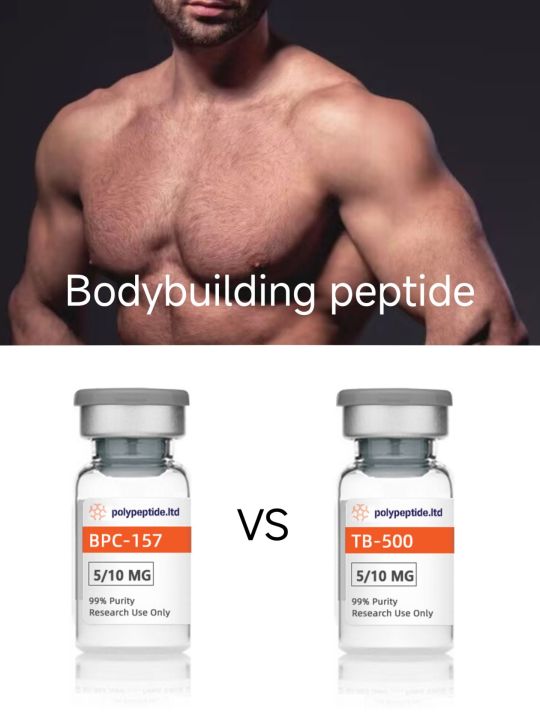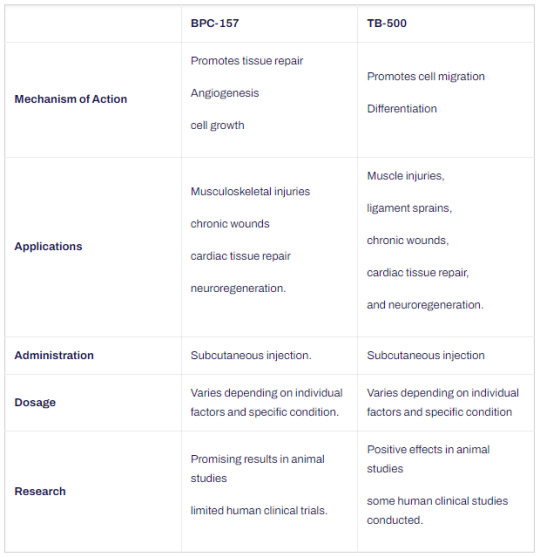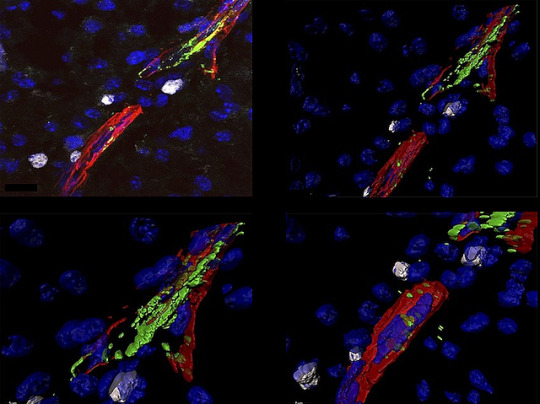#NeuroRegeneration
Explore tagged Tumblr posts
Text
youtube
#Spinal cord injury#neuroregeneration#nanomedicine#mitochondrial therapy#silica nanoparticles#dual-responsive nanoparticles#targeted drug delivery#neuroprotection#regenerative medicine#oxidative stress#inflammation control#apoptosis inhibition#cellular repair#tissue regeneration#advanced therapeutics#biomaterials#neuroscience research#precision medicine#theranostics#medical breakthrough.#Youtube
2 notes
·
View notes
Text

Causes Of Optic Nerve Damage.
The optic nerve is made up of nerve fibers that send signals to the brain. In the case of optic atrophy, something is interfering with the optic nerve’s ability to communicate these impulses. The interference can be caused by numerous factors, including: Stroke of the optic nerve, known as anterior ischemic optic neuropathy. A tumor that is pressing on the optic nerve. Optic neuritis is an optic nerve inflammation caused by multiple sclerosis.
https://www.globalstemcellcare.com/ey...
#OpticNerve#StemCells#OpticNerveRepair#StemCellTherapy#OpticNerveRegeneration#NeuroRegeneration#StemCellsForVision#NeuroScience#VisionRestoration#OpticNerveDamage#StemCellResearch#EyeHealth#StemCellTherapyForEyes#Ophthalmology#Neurodegeneration#GSCC#GlobalStemCellCare
0 notes
Text
Future curative therapy for the inherited metabolic disorder IEMS: cell therapy and neural regenerative medicine
Cell therapy is the transfer of whole cells into a patient to replace or repair damaged tissue or cells. Cell therapy treats disease or trauma by transferring healthy cells into a patient’s body to grow, replace or repair damaged tissue. The cells used in cell therapy may come from the patient (autologous cells) or from a donor (allogeneic cells). 一、 Introduction to Cell Therapy1. Understanding…

View On WordPress
0 notes
Text

Dr. Suga Syoujirou (434334633)
Gender: Male Age: 24 Department: Biology Specialty: Neuroregeneration and Neural Repair Likes: Cats Dislikes: Green peppers Fact: Has a chronic ear condition that requires him to wear a hearing aid.
"I'd like to report an incident that involves Dr. Toranosuke and I'd really prefer not to file it directly with him." Read Staffside here!
90 notes
·
View notes
Text

Sugar and Sprouts
Love sugar? Too much can damage your blood vessels, increasing your risk of diabetes and cardiovascular disease. Love artificial sweeteners? Unfortunately, they too may increase your risk of cardiovascular disease. Researchers investigated in zebrafish embryos. Fluorescence microscopy revealed exposing embryos to lots of sugar or artificial sweeteners caused excessive blood vessel sprouting (angiogenesis) along the length of the body (pictured) – a process linked to diabetic complications in humans, including cardiovascular disease. Looking closer at embryos exposed to artificial sweeteners, they found cells lining their blood vessels (endothelial cells) developed into cells that promote sprouting. Analysing the RNA of these cells revealed changes in gene activity, notably reduction of one, Foxo1a (highlighted in red in the vessels along the fish embryo), was underlying the increase in sprouting when the embryos were exposed to sugar. Further experiments confirmed activity of this gene played the same role in embryos exposed to artificial sweeteners, uncovering how these sugar alternatives can negatively affect blood vessels.
Written by Lux Fatimathas
Image from work by Xiaoning Wang, Jinxiang Zhao and Jiehuan Xu, and colleagues
Affiliated Hospital of Nantong University, Nantong Laboratory of Development and Diseases, School of Life Science; Co-innovation Center of Neuroregeneration, Nantong University, Nantong, China
Image contributed by the authors under a Creative Commons Attribution 4.0 International (CC BY 4.0) licence
Published in eLife, October 2024
You can also follow BPoD on Instagram, Twitter , Facebook and Bluesky
#science#biomedicine#immunofluorescence#biology#blood vessels#cardiovascular diseases#diabetes#sugar#sugar substitutes#zebrafish#angiogenesis
12 notes
·
View notes
Text
BPC-157 VS TB-500

1. What is BPC-157?
BPC-157 (also known as PL 14736, BPC 157) is a pentadecapeptide comprising 15 amino acids. It is derived from the body protection compound (BPC) found and isolated from human gastric juice. Animal studies have demonstrated its ability to expedite the healing process for various types of injuries, including muscle, tendon, and ligament damage. Moreover, BPC 157 has exhibited organ-protective properties and has been found to aid in the prevention of gastric ulcers.
2. What is TB-500?
Thymosin Beta-4 is a peptide consisting of 43 amino acids. In animal models, Thymosin Beta-4 has demonstrated the ability to enhance blood vessel growth, regulate wound healing, decrease inflammation, and reducel oxidative damage in both the heart and central nervous system. It plays a significant role in protecting, repairing, regenerating, and remodeling injured or damaged tissues. Additionally, Thymosin Beta-4 has garnered considerable attention in anti-aging research.
3. BPC-157 VS TB-500
The following is a comparison of BPC-157 and TB-500 (tb500 peptides).
(1) BPC-157
Mechanism of Action: BPC-157 promotes tissue repair, angiogenesis, and cell growth.
Applications: It is beneficial for musculoskeletal injuries, gastrointestinal disorders, and neurodegenerative conditions.
Administration: BPC-157 is typically administered through subcutaneous or intramuscular injection.
Dosage: There is no standardized dosage established for BPC-157S Research: Promising results have been observed in animal studies, but limited human clinical trials have been conducted.
(2) TB-500
Mechanism of Action: TB-500 promotes cell migration, differentiation, and tissue repair.
Applications: It is commonly used for muscle injuries, ligament sprains, chronic wounds, cardiac tissue repair, and neuroregeneration.
Administration: TB-500 is administered via subcutaneous injection.
Dosage: The dosage varies depending on individual factors and specific conditions.
Research: Positive effects have been observed in animal studies, and some human clinical studies have been conducted.

Further research is necessary to establish the efficacy and safety of both BPC 157 and TB 500 in humans. When considering their usage, dosage, and potential interactions, it is advisable to consult with a healthcare professional.
Additionally, individuals interested in comparing the benefits (tb 500 benefits) and potential differences between TB-500 and BPC-157 should seek professional guidance. It’s also important to note that there is a specific blend dosage available for BPC-157 and TB-500 (BPC-157 TB-500 blend dosage), which may offer unique effects.
3 notes
·
View notes
Text
Stem Cell Current Events in Neurological Disorder Research
Stem cell research continues to revolutionize how we approach complex medical conditions, particularly in the realm of neurological disorders. With advancements happening at an astonishing pace, it’s crucial to stay informed about how stem cell current events are shaping the future of neurology. The Cell Surgical Conference brings together experts from around the world to discuss emerging treatments, clinical trial outcomes, and breakthroughs in stem cell technology. This gathering of innovative minds contributes to improved patient care and deeper science
Breakthrough Stem Cell Therapies for Brain Injuries
Stem Cell Current Event in brain injury research have introduced groundbreaking possibilities for restoring damaged neural tissue. Researchers have observed promising results using mesenchymal stem cells to support neuroregeneration in patients with traumatic brain injuries. Clinical trials shared at conferences highlight the improvement of motor functions, memory, and emotional stability in affected individuals. These findings offer hope for long-term rehabilitation where traditional methods have fallen short. Continued exploration of stem cell mechanisms not only improves treatment outcomes but also enhances our understanding of the brain’s natural healing processes.
Stem Cell Advances in Parkinson’s Disease Treatments
One of the most widely discussed stem cell current events in recent neurological research involves Parkinson’s disease. Scientists are developing stem cell-derived dopaminergic neurons to replace those lost in the progression of the disorder. The Cell Surgical Conference showcases how these stem cell approaches are leading to improved mobility and reduced symptoms in clinical settings. This breakthrough brings optimism for patients and healthcare professionals alike, as it paves the way for personalized regenerative medicine. While still under active investigation, these developments point toward long-term disease modification.
Investigating Stem Cell Impact on Multiple Sclerosis
Stem cell current events have also shed light on new interventions for multiple sclerosis (MS), a chronic and often disabling disease of the central nervous system. Stem cell therapies are now being tested for their ability to repair myelin sheaths and reduce immune system attacks on nerve cells. The results from various pilot studies and clinical trials were shared at the Cell Surgical Conference, revealing improvements in mobility and reduced relapse rates. Researchers are particularly focused on how hematopoietic and mesenchymal stem cells interact with MS pathology.
Alzheimer's Disease Research and Stem Cell Innovations
Alzheimer’s disease is another focus of current stem cell events in neurological research. Scientists are developing cellular models derived from stem cells to better understand the progression of Alzheimer’s and to test potential treatments more accurately. Innovations presented at the Cell Surgical Conference show how induced pluripotent stem cells (iPSCs) can mimic the neural decline seen in Alzheimer’s patients. These models allow researchers to examine how different therapies impact cognitive function and memory retention.
Stem Cell Applications in Pediatric Neurological Conditions
Recent stem cell current events have highlighted new therapeutic avenues for pediatric neurological conditions such as cerebral palsy and spinal muscular atrophy. Ongoing studies discussed at medical conferences show how early intervention using stem cell therapy may lead to improved motor development and neural communication in children. These findings reflect a paradigm shift from symptom management to regenerative solutions. Physicians and researchers participating in the Cell Surgical Conference emphasize the significance of dosage timing and cell type in achieving optimal outcomes.
Clinical Trials Validating Stem Cell Neurological Use
The role of clinical trials remains central to tracking stem cell current events in the field of neurology. Each new phase of testing brings researchers closer to identifying safe, reproducible, and effective stem cell therapies. The Cell Surgical Conference regularly shares trial updates, including recruitment criteria, methodologies, and preliminary results. These insights help set benchmarks for other research institutions and ensure treatments are progressing toward real-world application.
Ethical Discussions Around Emerging Stem Cell Protocols
No discussion about stem cell current events would be complete without addressing the ethical considerations surrounding their use in neurological disorder research. As treatments become more sophisticated, ensuring ethical sourcing, patient consent, and long-term monitoring becomes essential. Topics such as embryonic stem cell use, patient eligibility, and therapeutic transparency were extensively debated at the Cell Surgical Conference. These ethical frameworks not only protect patient welfare but also guide the responsible advancement of the field.
Conclusion
Staying informed about stem cell current events in neurological disorder research is essential for medical professionals and patients alike. From clinical breakthroughs to ethical debates, the field is evolving rapidly and offering new paths for hope and healing. Conferences like the one hosted by Cell Surgical Conference play a pivotal role in bridging research and real-world application. As innovations in stem cell therapy continue to advance, they promise not only to treat but potentially reverse neurological damage.
0 notes
Text
Neural Stem Cells: Stroke Recovery Breakthrough! #sciencefather #NeuralStemCells
Neural stem cells possess the unique ability to differentiate into various neural cell types, including neurons, astrocytes, and oligodendrocytes. This versatility enables them to replace damaged or lost neural tissue, facilitating brain repair and functional recovery following a stroke. Moreover, NSCs secrete neurotrophic factors and regulate neuroinflammation, supporting the survival and function of existing neurons and creating a favorable environment for neuroprotection and repair. Visit Our Website : http://biotechnologyscientist.com Contact Us : [email protected] Nomination Link : https://biotechnologyscientist.com/award-nomination/?ecategory=Awards&rcategory=Awardee #NeuralStemCells#StrokeRecovery#StemCellTherapy#Neuroregeneration #BrainRepair#Neuroplasticity#RegenerativeMedicine#Neurogenesis #strokerehabilitation #NSCTherapy#Neuroscience#MedicalBreakthrough #BrainHealth#InnovativeMedicine#neuroscienceresearch #StemCellResearch#NeuroRecovery#FutureOfMedicine#NeuroHealing #StrokeAwareness
0 notes
Text
Christoph Muth – Fighting a Rare and Devastating Neurological Disorder
Christoph Muth from Duisburg, Germany, is battling a rare and medically complex multisystem neurological disorder triggered by a medication switch from Escitalopram to Duloxetine. Since then, he has been suffering from a progressive Post-Acute Withdrawal Syndrome (PAWS) with severe sensorimotor, autonomic, and central nervous system disturbances — a condition barely documented worldwide.
Medically confirmed findings include:
Small fiber neuropathy
Autonomic nervous system dysfunction
NMDA receptor antibodies (suggesting autoimmune encephalitis)
Cerebellar and cortical changes
Pronounced neuroimmunological reactions
Multiple antibody processes now active simultaneously
Despite numerous outpatient treatment attempts — including one in Switzerland and others in North Rhine-Westphalia — no lasting stabilization has been achieved. The condition continues to worsen. Further inpatient treatments are currently being prepared. Some therapeutic protocols, such as EECP, advanced infusion programs, or stem cell approaches, need to be repeated and expanded. Many of these are not covered by health insurance.
Christoph urgently needs financial support to continue these innovative approaches in neuroregeneration.
SAT.1 NRW has already reported on his case. Still, broader public awareness, medical networking, and donation support are desperately needed for Christoph and others facing ultra-rare neuroimmunological diseases.
More information and the donation campaign can be found here:
https://gofund.me/e20cae20
www.chrisbacktolife.com
#RareDisease#NeurologicalDisorder#AutoimmuneEncephalitis#PAWS#SmallFiberNeuropathy#MedicalHelp#Neuroinflammation#NMDAreceptor#MultisystemDisorder#StemCells#InfusionTherapy#EECP#DisabilityAwareness#HealthJustice#ChrisBackToLife
0 notes
Text
UP patient with BILATERAL OPTIC ATROPHY and TINNITUS received retrobulbar exosome and stem cell therapy.
Optic nerve disorders can cause vision problems in one or both eyes because the optic nerve carries images from the eye to the brain. Stem cell treatment is a promising option for helping with these issues. By placing special stem cells into the eye's jelly-like center, we can improve the layer of nerve cells in the retina and help these cells move into the optic nerve. This method has shown high probability of better results, offering hope for people with optic nerve disorders.
Email id- [email protected] Ph no- +91 82876 76389 https://www.globalstemcellcare.com/eye-disorder/stem-cell-treatment-for-optic-nerve-atrophy/
#Stemcell#Exosome#AdvanceTreatment#CellRegeneration#BILATERALOPTICATROPHY#BilateralOpticAtrophy#Tinnitus#ExosomeTherapy#StemCellTherapy#VisionHealth#Neuroregeneration#Ophthalmology#InnovativeTreatment#OpticNerveHealth#RegenerativeMedicine#PatientCare#ClinicalResearch#EyeHealth#Neuroscience#VisionRestoration#TherapeuticAdvancements
0 notes
Text


Chainsaw injury on my palm 4 days post injury. 12 stitches total. Damage to middle finger nerves
°Lysine Thorne for collagen & tissue rebuilding
°Turmeric for inflammation
°Oregano oil for pain, inflammation, infection
°Thorne B vitamin Complex Nerve function
°Lions mane mushroom for neuroregeneration
Redlight therapy 2x20min /day
Hot Epsom salt baths with dry brushing
0 notes
Text
Stem Cell Therapy for Multiple Sclerosis: A Promising Frontier in Treatment

Multiple sclerosis (MS) is a challenging autoimmune disorder that affects millions worldwide. As researchers continue to seek more effective treatments, stem cell therapy has emerged as a promising avenue for managing and potentially modifying the course of this disease. This blog post explores the current landscape of stem cell therapy for MS, its potential benefits, challenges, and what patients should know.
Understanding Stem Cell Therapy for MS
Stem cell therapy for MS aims to achieve three primary goals:
Reduce inflammation and demyelination
Repair or replace damaged nerve tissue
Promote neuroregeneration
These objectives address the core issues of MS, potentially offering hope for improved outcomes and quality of life for patients.
Types of Stem Cells Used
Researchers are exploring several types of stem cells in MS treatment:
Mesenchymal Stem Cells (MSCs): Derived from bone marrow, fat tissue, or umbilical cord tissue.
Hematopoietic Stem Cells (HSCs): Obtained from bone marrow or peripheral blood.
Neural Stem Cells (NSCs): Sourced from fetal brain tissue or induced pluripotent stem cells (iPSCs).
Each type of stem cell offers unique properties and potential benefits in treating MS.
Potential Benefits
Stem cell therapy shows promise in several areas:
Reduced relapse rates
Improved cognitive function
Enhanced motor function
Decreased fatigue
Potential for disease modification
These benefits could significantly improve the lives of MS patients, offering hope for better management of symptoms and potentially slowing disease progression.
Current Research and Trials
The scientific community is actively investigating stem cell therapies for MS through various approaches:
Autologous Hematopoietic Stem Cell Transplantation (AHSCT)
Mesenchymal Stem Cell Transplantation (MSCT)
Neural Stem Cell Transplantation (NSCT)
These trials aim to establish the safety and efficacy of different stem cell therapies in treating MS.
Challenges and Limitations
Despite its promise, stem cell therapy for MS faces several challenges:
Variability in stem cell sources and protocols
Limited understanding of MS pathology
Potential risks (infection, graft-versus-host disease)
High cost and limited accessibility
Researchers and clinicians are working to address these challenges to make stem cell therapy a more viable option for MS patients.
Clinics and Centers Offering Stem Cell Therapy for MS
Several institutions worldwide are at the forefront of stem cell therapy for MS:
Cleveland Clinic (USA)
University of California, San Francisco (USA)
Medtravellers Stem Cell Therapy (India)
San Raffaele Hospital (Italy)
Apollo Hospitals (India)
It’s important to note that insurance coverage for these treatments is limited, and most are still considered experimental.
Before Considering Stem Cell Therapy
If you’re an MS patient considering stem cell therapy, it’s crucial to:
Consult a neurologist or MS specialist
Research reputable clinics and trials
Understand potential risks and benefits
Ensure informed consent
Conclusion
Stem cell therapy represents a promising frontier in the treatment of multiple sclerosis. While challenges remain, ongoing research and clinical trials offer hope for improved outcomes and quality of life for MS patients. As with any emerging treatment, it’s essential for patients to stay informed, consult with medical professionals, and carefully consider their options.
Source Link:- https://www.medtravellers.com/blog/stem-cell-therapy-for-multiple-sclerosis-ms/
0 notes
Text
#Advanced Education and e-Learning#Audiology programmes#Optometry programmes#Neuroscience programmes#Speech & Language programmes
0 notes
Text

Not Just Clots
Neurons are wrapped in a fatty material called myelin which acts like an insulator keeping nervous signals on their intended path. As this wrapper is damaged in multiple sclerosis (MS), stimulating re-myelination from its producer cells – oligodendrocytes – is a therapeutic goal. Here, the influence of the blood's platelets on oligodendrocyte progenitor cells is revealed – manipulating platelets presents possibilities for MS treatments
Read the published research article here
Image from work by Amber R Philp and colleagues
Laboratory of Stem Cells and Neuroregeneration, Institute of Anatomy, Histology and Pathology, Faculty of Medicine, Universidad Austral de Chile, Valdivia, Chile
Image originally published with a Creative Commons Attribution 4.0 International (CC BY 4.0)
Published in eLife, August 2024
You can also follow BPoD on Instagram, Twitter and Facebook
#science#biomedicine#immunofluorescence#biology#neuroscience#brain#neurons#myelin#multiple sclerosis#platelets
4 notes
·
View notes
Text
Patient's Attendant Share His Experience After Stem Cell Therapy For Cerebral Palsy
Stem cell therapy holds promise in the treatment of cerebral palsy, a complex neurological disorder affecting movement and posture. This innovative approach involves the use of undifferentiated cells, capable of differentiating into various cell types, to repair damaged tissues and promote functional recovery.
In cerebral palsy, stem cell therapy aims to replace or repair damaged brain cells, enhance neuroregeneration, and modulate the inflammatory response.
Email id- [email protected]
Ph no- +91 9650760803
#cerebralpalsy#stemcelltherapyforcerebralpalsyinindia#costofcerebralpalsytreatment#stemcelltherapyforcpchild#stemcells#cerebralpalsytreatment#seizure#epilepsy#specializeg_growt_factor#supportive_therapy#beststemcellcenterinindia#stemcelltreatment#exosometherapy#dietconsultant#physiotherapysession
0 notes